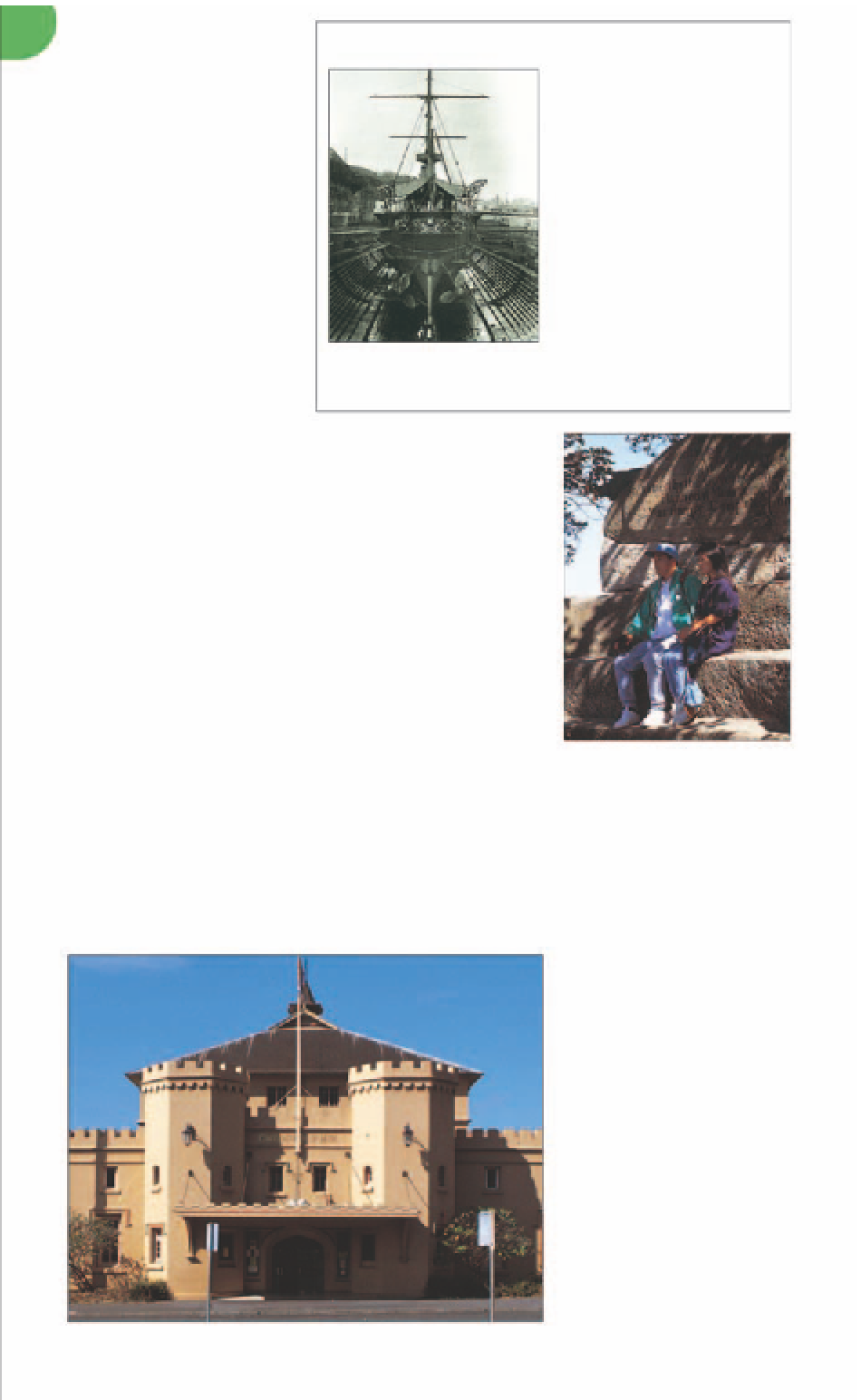Travel Reference
In-Depth Information
Conservatorium
of Music
2
Macquarie St.
Map
1 C3.
Tel
9351
1222.
@
Sydney Explorer, Circular
Quay routes.
#
9am-5pm Mon-Fri,
9am-4pm Sat (public areas only).
¢
public hols, Easter Sat, 24 Dec-2 Jan.
6
7
8
by appointment (phone 9351
1296 for details).
THE HISTORY OF COCKATOO ISLAND
Now deserted, the largest of
the 12 Sydney Harbour
islands was used to store
grain from the 1830s. It was a
penal establishment from the
1840s to 1908, with prisoners
being put to work cons-
tructing dock facilities. The
infamous bushranger
“Captain Thunderbolt” made
his escape from Cockatoo in
1863 by swimming across to
the mainland. From the 1870s
to the 1960s, Cockatoo Island
was a thriving naval dock-
yard and shipyard, the hub of
Australian industry.
When it was finished in 821,
this striking castellated
Colonial Gothic building was
meant to be stables and
servants' quarters for Govern-
ment House, but construction
of the latter was delayed for
almost 25 years. That stables
should be built in so grand a
style, and at such great cost,
brought forth cries of outrage
and led to bitter arguments
between the architect, Francis
Greenway
(see p114)
, and
Governor Macquarie - and a
decree that all future building
plans be submitted to London.
Between 1908 and 1915,
“Greenway's folly” underwent
a dramatic transformation. A
concert hall, roofed in grey
slate, was built on the central
courtyard and the building in
its entirety was converted for
the use of the new Sydney
Conservatorium of Music.
The Conservatorium's
facilities include a café which
holds lunchtime concerts
during the school term and
an upper level with harbour
views. “The Con” continues
to be a training ground for
future musicians as well as
being a great place to visit.
HMS
Orlando
in dry dock at
Cockatoo Island in the 1890s
Government
House
3
Macquarie St.
Map
1 C2.
Tel
9931
5222.
@
Sydney Explorer, Circular
Quay routes.
House
#
10:30am-
3pm Fri-Sun.
¢
Good Fri, 25 Dec.
Garden
#
10am-4pm daily.
6
7
8
every 30 mins.
www
.hht.net.
au/museums
What used to be the official
residence of the governor of
New South Wales overlooks
the harbour from within the
Royal Botanic Gardens, but the
grandiose, somewhat sombre,
turreted Gothic Revival edifice
seems curiously out of place
in its beautiful park setting.
It was built of local sand-
stone and cedar between 1837
and 1845. A fine collection of
19th- and early 20th-century
furnishings is housed within.
Resting on the carved stone seat
of Mrs Macquaries Chair
Mrs Macquaries
Chair
4
Mrs Macquaries Rd.
Map
2 E2.
@
Sydney Explorer, 888.
7
The scenic Mrs Macquaries
Road winds alongside much of
what is now the city's Royal
Botanic Gardens, from Farm
Cove to Woolloomooloo Bay
and back again. The road was
built in 1816 at the instigation
of Elizabeth Macquarie, wife
of the Governor. In the same
year, a stone bench, inscribed
with details of the new road,
was carved into the rock at the
point where Mrs Macquarie
would stop to admire the view
on her daily constitutional.
Although today the outlook
from this famous landmark is
much changed, it is just as
arresting, taking in the broad
sweep of the harbour and fore-
shore with all its landmarks.
The Conservatorium of Music at the edge of the Royal Botanic Gardens






































